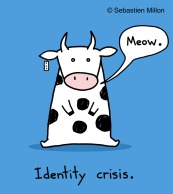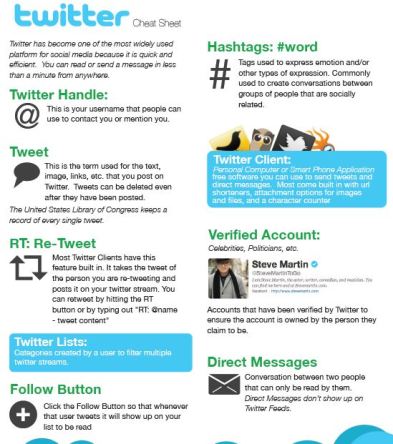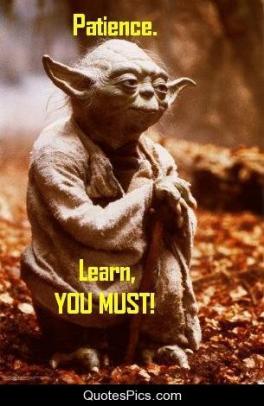Tweachers – My advice for starting out with #CupofTeaCPD Trilogy Part 2
I am quite happy to accept that I wasn’t the first. But since I posted my blog on why Teachers should use twitter, it seems that everyone started sharing theirs and to be fair everyone who has, pretty says the same thing.
It all equates to my new favourite phrase “Cup of Tea CPD”.
So, here are my Top 10 things to do if you are going to start up with Twitter. They are in no particular order, they are the things I have done and while I am no @TeacherToolkit or @LearningSpy or @LeadingLearner – I am pleased with my first forays into the whole chasm of Social Media.
10: Choose your identity carefully.
Choose a good handle, this is the name people will remember and associate with you.
Keep it short and memorable, it might be your name or what you do or stand for.
Be careful. I made two mistakes with mine: @WatsEd.
Firstly that is very close to ‘Wasted’ and secondly I have now lost count the number of people, who have assumed my name is Ed.
9: Make sure people can see you.
If you keep the ‘egg’, then it will put people off, add a profile picture, it need not be your face if you think it might scare away the internet (don’t worry though I haven’t been shunned for showing my face).
It will help your case if your profile looks real and human. There are a lot of fake accounts out there and if you want to make Twitter work for you, then be ‘present’.
8: Write a bio.
You have 160 characters available to you to say who you are and what you do or share some thing personal. Pets and children are popular, so is job title, hobbies and interests – whatever you like. This gives your follows and followers a chance to open dialogue with you and find common ground.
7: Choose your 1st 10 – 20 follows.
This bit is really important.
What do you want to get back from your exploration into the Twitter Jungle?
Pith Helmet on, rucksack and supplies at the ready, machete in hand (OK, perhaps not). Off you go.
Here are some people who would be good to get you started…
- @WatsEd (Well, I had to put me!)
- @redgierob (Rob leads at the Literacy Shed site)
- @grahamandre (Graham runs the Numeracy Shed site)
- @ICT_MrP (for all things iPad and Computing)
- @InspiredMind5 (Comics in Literacy and wider learning)
- @MichaelT1979 (Michael does a fantastic job with Curriculum 2014 resources)
- @LearningSpy (David Didau – a man with his finger on the pulse of education today)
- @alanpeat (Alan is an author and creator of brilliant iOS apps ‘Exciting Sentences’ & ‘Pocket Punctuation’)
- @bryngoodman (ICT leader/writer and knowledgeable fellow)
- @Mr_SJS (Teacher and author of ‘The Penguin Pig’, see @PenguinPigStory)
- @TeacherToolkit (Most followed teacher in the UK – a man who knows what he is talking about – T&L/Leadership)
- @SeanHarford (HMI and Ofsted’s National Director for Schools Policy)
- @BeyondBehaviour (Steve Russell tweets about Behaviour Management/Strategy)
- @rivierabenson (Chris teaches in France and tweets teaching and learning)
- @ICTmagic (Martin shares endless links to useful, interesting and addictive websites for learning)
- @ASTsupportAAli (Amjad talks leadership, SEND, English and TwitterCoaching)
- @gazneedle (Gary tweets Literacy and Maths – Primary AHT)
- @DeputyMitchell (Blogging/Quadblogging and EdTech)
- @TomBennett71 (Tom is ‘A Teacher who Writes’ ITT and Behaviour inc. TES)
- @beingbrilliant (Andy Cope is an author and happiness expert)
Well there is a selection of 20 – pick and choose – look at the lists of followers and follows and you will soon pick up a healthy list.
6: Contribute – Be brave & Say something
It is like writing when you were little. What shall I write first? How shall I start?
Say “Hello!”
Tell the world it is your first tweet – it doesn’t matter.
Have a look through the people you follow’s timeline – RT things you like, favourite things you really like. Reply to the things that interest you, ask a few questions.
If you say nothing and just lurk on the periphery then you will get nothing out of Twitter, if you want it to work for you, then you need to put a little something in. You’ll get some feedback.
Be seen.
Talk about what interests you, what you want to know more about, reflect on your own practice, ask for new ideas.
Use images and infographics – share useful things that you have on your computer, links, youtube videos. The better the range, the more interesting you will be to prospective followers.
Join in with other people’s conversations – they won’t mind (I haven’t upset anyone yet by butting in!) If you are thinking about something because of a tweet posted, then reply. You can get a chat going then and it gets to be fun.
Dive in, the water is fine.
Do consider what you say though, remember that this is going to be your professional face.
It was @gazneedle who said: “If I wouldn’t shout it in the playground, then I wouldn’t tweet it.” He is right.
Don’t troll, don’t be dismissive. Call people out on their ideas, but let them validate them if they can because that is the key to #CupofTeaCPD!
5: Know what things mean!
There are a lot of acronyms and jargon to wade through – much is common sense but this should help you along the way to begin with.
4: Use #hashtags
There are so many #chats to join in with. These are 30-60 mins of VERY intense tweeting about specific topics.
- #ukedchat
- #edchat
- #education
- #behaviourchat
- #SLTchat
- #headteacherchat
- #MLTchat
- #aussiEd
- #usedchat
- #whatisschool
The list goes on.
Many of these have the discussion topics chosen by the users. These all have an appointed day and time, so if you are prepared, you are good to go.
When you tweet to start with, include these #hashtags in what you say, people who follow them will get to see what you say and may well follow you or reply.
3: Share your website or blog address.
WatsEducation Blog – http://www.watseducation.wordpress.com
WatsEd Consultancy – http://www.wats-edconsultancy.moonfruit.com
Twitter is social media after, so if you have something to say – show people where to find it.
It is a bit like your Bio. It will allow people to see what your philosophy is, what’s on your mind, what motivates or concerns you, about education in general or perhaps a reflection on your own practice.
If you have something to sell – here’s a chance.
If you don’t have a blog – start one – you don’t have to do very much – but once you read others it will most likely inspire you to write something too.
2: Separate Personal and Professional
Not always as easy as it sounds.
If you are planning on using Twitter professionally, I suggest you keep your non-education stuff separate. It keeps things tidy and presents your professional face. Social Media is a way of tracking someone (Big Brother is watching – or is he!?)
Remember your colleagues and school leaders might be joining you – what do you want them to see?
I have found that very quickly, as I built up a PLN (Personal Learning Network) of like minded individuals that banter and in jokes do start, that’s OK, but if I was chatting with non-education people on the same timelines then it might get somewhat blurred.
Make a decision – in the end you can play it out however you like.
Decide what will work best for you.
1: Be patient
No, seriously. Be patient.
When you start you ca expect to get a little feedback on what you say. Perhaps even the holy grail of a Retweet (RT) or favourite. This is how people bookmark your tweets. The more that you say and do, the more interest you will develop and the more people will be inclined to follow you. Over the course of a few weeks/months the network will grow and you will find yourself drawn into more and more conversations and discussions.
Don’t let it take over your life (that is very easy, believe me!)
Be discerning about who you develop links with, some people will just be people you follow, some will be people you have occasional link with and then there will be people who form your PLN (Personal Learning Network) – you will realise who they are when they include your name in the tweets so you are drawn in, or they will refer to you when questioning or answering others, this is when Twitter becomes really powerful.
Now you have got yourself started, the learning can begin. I have been amazed at the wealth of knowledge, ideas and resources out there. I knew they would exist, but Twitter has shown me where to go to read about more and more interesting things.
I has both shown me how much I don’t know and need to learn and how much I do know and have been doing for years and even things I did and stopped doing for a variety of reasons.
Make your experience as broad and varied as you can.
Read blogs.
Share ideas.
The more you do people will want to know more about you.
Good Luck.
Enjoy the adventure, there are many others taking it with you and you can rest assured that you will bump into them on your way!
Update: 30-08-14
I have received this document as a result of these blog posts:
Essential Edchat Resource Guide
“This guide was brought to you by USC Rossier’s online EdD”
Hopefully you may find it useful.
Posted on 02/08/2014, in Blogging, EdTech, Internet, T&L and tagged advice, battt, blog, blogging, classroom, CPD, edtech, education, ict, impact, internet, leadership, learning, management, school, support, teaching, training, Twitter. Bookmark the permalink. 12 Comments.













Reblogged this on The Echo Chamber.
LikeLike
Fantastic stuff, I agree with almost all of it.
You do mention following like minded people, which is great, but unless you follow those who might not agree with you sometimes you may just cement everything you already know and not gain a new perspective.
I’ve written before on this here: http://wp.me/p2z9Lp-ed
LikeLike
Glad you enjoy the read.
In Part One of the Trilogy I do say:
“I can ask a question of my ‘Twitterati’ and within the day I will have answers, lots of answers, from people in different contexts who have a range of opinions – I can discuss them, argue my case, back down, stand up – whatever I need.”
But I know what you mean – if you are never questioned by someone or called out on what you think, there is no room for growth.
@FarrowMr is very good for that, so is @rivierabenson.
LikeLike
I hadn’t realised I’d come in midway through a trilogy! I will read the other installments now!
LikeLike
That’s OK
Only Part 1 and Part 2 so far.
Part 3 is being drafted, but I’m undecided on the focus.
Impact seems obvious, so I might write it properly September/October.
Unless inspiration lands before then!
LikeLike
Enjoyed part one too, will look forward to the final installment!
LikeLike
Reblogged this on batttuk and commented:
Fabulous blog further promoting the work we are also trying to encourage.
LikeLike
Very interesting,thank you
LikeLike
You are sharing very interesting content.
LikeLike
Pingback: Just One More Thing: Twitter for Teachers | Your Friendly Neighbourhood Teacher
Pingback: Knock Knock! Who’s There? Reality! – Preparing to be an NQT. | Wats-Education - from the inside looking out.
Pingback: Education Panorama (September ’14) by @TeacherToolkit | @TeacherToolkit